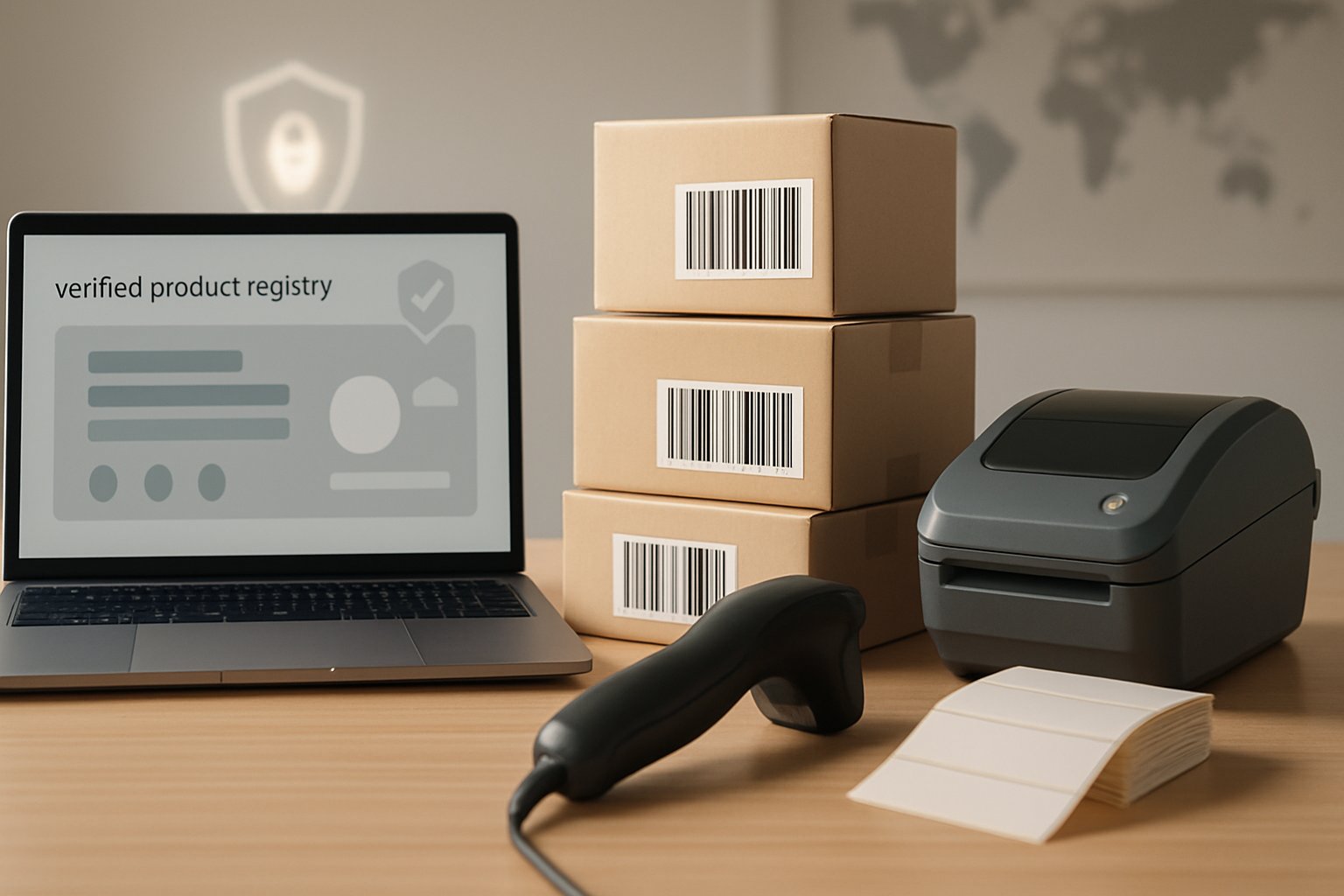How to Get GS1 UPCs

If you’re selling products through retailers, online marketplaces, or even preparing to expand internationally, you’ve probably discovered that you need UPCs. In our last article, we explained the difference between UPCs and EANs and why both exist. Now, let’s walk through how to actually get your UPCs the right way: directly from GS1, the global standards organization that issues them.
Why GS1 Matters
GS1 is the only official source for UPCs. When you buy codes from GS1, they’re registered to your business and linked to your company name in the GS1 database. That registration is what major retailers and marketplaces like Amazon look for when verifying your product listings.
Third-party resellers may offer “cheap” UPCs, but these are often recycled codes that were once assigned to another company. Using them creates risks:
- Retailer rejections: Platforms may block or delist your products if the code isn’t tied to your brand.
- Data conflicts: If the code was previously used, it may still be connected to old product data.
- Lost credibility: Customers and retail partners may view your brand as less trustworthy if identifiers don’t match.
In short: buying from GS1 future-proofs your brand by ensuring your UPCs are legitimate, unique, and globally recognized.
Steps to Get GS1 UPCs
Getting UPCs from GS1 is straightforward, but it’s important to understand the process:
1. Register with GS1
Start at GS1.org (or your country’s GS1 website, such as GS1 US). You’ll create an account for your business and provide basic company information.
2. Choose Your Company Prefix
GS1 assigns your brand a company prefix—a unique number that forms the foundation of all your UPCs. This prefix ensures your codes are linked back to your company in the GS1 database.
3. Decide How Many Barcodes You Need
- Single UPCs: If you only have one or two products, GS1 offers “GS1 US GTINs” (single UPCs) without requiring a company prefix.
- Prefix + Bulk UPCs: If you plan to launch multiple products or variations (sizes, colors, flavors, etc.), purchasing a prefix allows you to generate as many UPCs as you need under your brand.
4. Assign UPCs to Your Products
Each unique product gets its own UPC. For example, a red medium T-shirt and a blue medium T-shirt would each need separate UPCs.
5. Download Barcode Images
Once your UPCs are assigned, GS1 provides digital barcode files that you can print on packaging, labels, or tags.
Costs to Expect
GS1 charges based on how many UPCs you need. Fees include:
- Initial setup fee: Covers your company prefix or single GTIN purchase.
- Annual renewal fee: Keeps your codes registered and linked to your brand.
While GS1 UPCs cost more than reseller codes, the investment protects your brand and prevents costly problems down the road.
How UPCs Work With SKUs
It’s important to understand the difference between UPCs and SKUs:
- UPCs are external, standardized product identifiers used by retailers and marketplaces.
- SKUs are internal identifiers that your brand creates for inventory management.
Together, they form a complete system: SKUs keep your operations organized, while UPCs ensure your products are recognized everywhere else. (Read more about creating SKUs here.)
Future-Proofing Your Brand
Getting GS1 UPCs isn’t just about compliance—it’s about setting your brand up for growth. Clean, certified product identifiers:
- Build trust with retailers and marketplaces
- Ensure smooth expansion into international sales
- Make inventory reporting and tracking easier
- Protect your brand identity long-term
By securing UPCs directly through GS1, you’re creating a solid foundation for your business—one that keeps your products retail-ready today and into the future.








































